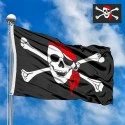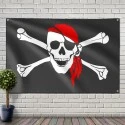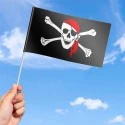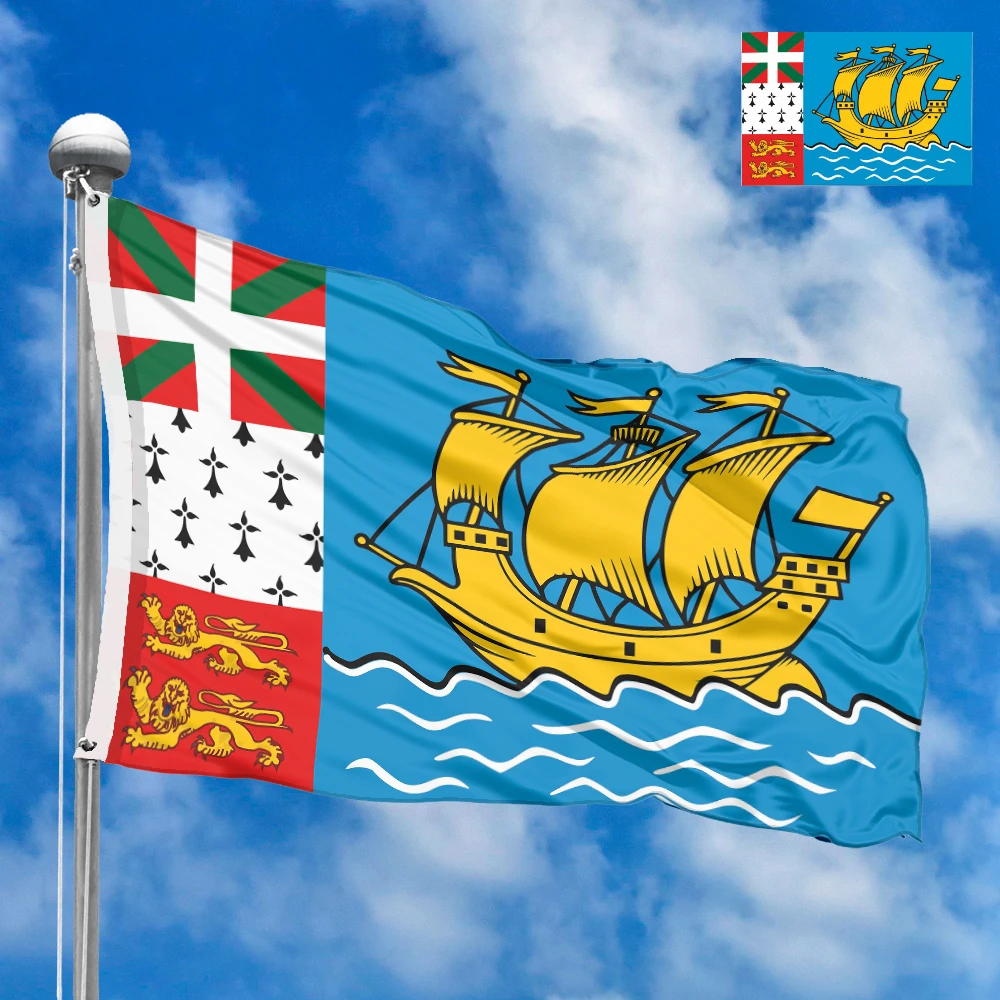- All Flags
- Flags of Countries by Continent
-
Flags of Organizations
- Flags of UN countries
- Flags of the European Union countries
- Flags of NATO countries
- Flags of the countries of the Organization of Islamic Cooperation
- Flags of the countries of the Organization of American States
- Flags of the Arab League countries
- Flags of the African Union countries
- Flags of the countries of the Union of South American Nations
- Flags of the Commonwealth of Nations
- Flags of the countries of the Secretariat of the Pacific Community
- Flags of the Nordic Council countries
- Flags of the Caribbean Community
- Flags of the countries of the Association of Southeast Asian Nations
- Flags of the East African Community
- Flags of the countries of the Organization of Turkic States
- LGBT Community Flags
- Historical Flags
- Ethnic Flags
- Flags of the USA (states)
Description
The pirate flag, or the Jolly Roger, is one of the most universally recognized symbols of rebellion, freedom, and defiance. The design you've described—a black field with a white skull in a red balaclava and crossed bones—is a striking modern take on this classic emblem. While this specific image is a creative interpretation rather than a historical artifact, it perfectly captures the spirit of piracy by blending the traditional symbols of death and danger with a contemporary touch of anonymity and rebellion. This flag is not just a banner; it's a statement, a psychological weapon, and a badge of a lawless brotherhood.
Design and Symbolism
The flag’s design is a powerful composite of classic pirate heraldry and a unique, modern twist.
-
Black Field: Historically, the black flag was a declaration of intent. It meant the pirates would not show mercy and that anyone who resisted would face a grim end. This color symbolizes death, dread, and a complete rejection of the established legal order.
-
White Skull and Crossed Bones: The core of the pirate flag. The skull is an age-old symbol of mortality and death, a grim reminder that life is fleeting. The crossed bones are often interpreted as a symbol of death's finality. Together, they represent the pirate's trade: a life lived in the shadow of death, where every battle could be the last. This universal symbol of mortality was meant to terrify and intimidate merchant sailors into surrendering without a fight.
-
Red Balaclava: This is the most unique element of your design, and its symbolism can be interpreted in a compelling way. A balaclava represents anonymity, stealth, and modern insurgency. It suggests a pirate who operates outside of all systems, concealing their identity and striking from the shadows. The red color of the balaclava is particularly symbolic, amplifying the flag’s message of bloodshed and rebellion. Historically, a solid red pirate flag meant "no quarter," signifying a battle to the death with no mercy. Here, the red balaclava marries the concept of modern rebellion with the historical meaning of blood and relentless fury.
History of Creation and Adoption
The history of pirate flags is rich and varied. The iconic skull and crossbones, or Jolly Roger, began to appear during the Golden Age of Piracy in the early 18th century. Before this, pirates often used simple red flags (bloody red flag) or no flag at all to avoid detection. Each pirate captain was free to design their own unique flag, and there were many variations. Famous pirates like Edward "Blackbeard" Teach and Calico Jack Rackham had their own distinctive flags, often incorporating elements like hourglasses, cutlasses, or hearts. The adoption of a personalized flag was an important ritual. It served as a declaration of the captain's identity and a rallying symbol for their crew. The flag was a psychological tool, raised to intimidate enemies and signal their intentions from a distance. The design you have chosen continues this proud tradition of creating a unique, personalized banner that speaks to the specific character and philosophy of its fictional crew.
Flag Size and Proportions
There was no standardized size for historical pirate flags. They were typically designed to be large and imposing, often the size of a standard naval ensign, so they could be easily seen from a distance. The proportions were typically around 2:3 or 1:2. The central emblem was made as large as possible to maximize its psychological impact. The flag would be made from durable fabric like linen or silk, intended to withstand the harsh conditions at sea. For a modern flag based on this design, a similar approach would be ideal: a large, imposing banner with the central emblem bold and clearly visible.
The Flag and its Meaning for the Crew
For a pirate crew, their flag was a symbol of their unity and their shared defiance of the world's laws. It represented a pact between the crew and their captain—a commitment to a life of danger, plunder, and freedom. Flying the Jolly Roger was a moment of great significance, transforming the crew from mere sailors into a feared brotherhood. Your flag, with its modern twist, would likely carry a similar weight: it would be a badge of honor for the crew, representing not just a rejection of society but an embrace of a new, renegade identity. The menacing imagery would serve to strengthen the crew's resolve and remind them of the lethal nature of their trade.
Interesting Facts
-
The origin of the term "Jolly Roger" is still debated. Some believe it came from the French "Joli Rouge" (Pretty Red), referring to the red flag of battle.
-
Different pirate captains had unique flags. Bartholomew Roberts' flag showed him standing on two skulls, representing his two victims, while Blackbeard's flag featured a horned skeleton holding a spear and an hourglass.
-
The black flag was often raised only when a pirate ship was within striking distance of its prey. From a distance, a ship might fly a friendly flag to get close without arousing suspicion.
-
The simple, stark color scheme of black and white was chosen for maximum contrast, making the flag easy to recognize from afar and in all weather conditions.
In conclusion, this flag design is a testament to the enduring legacy of pirate symbolism. By taking the classic elements of the Jolly Roger and adding a modern, rebellious flair with the red balaclava, it creates a powerful new emblem that perfectly captures the spirit of piracy: bold, dangerous, and defiantly free.
In the demonstration images, full-size flags are shown with proportions of 2:3, and hand-held flags with proportions of 1:2.
Donation
Download
Completely free for commercial and non-commercial use (public domain).
You can freely use them in your news magazines, websites, software, mobile applications.
We appreciate a backlink to https://flagssite.com
Raster files - Pirate Flag Jolly Roger (PNG, JPG)
 Waving flag
Waving flag
- PNG format (transparent background), 72dpi, dimensions in Pixels (px), aspect ratio 3:4.
- 15х20 px
- 30х40 px
- 60х80 px
- 120x160 px
- 240x320 px
 Sizes:
Sizes:
"v15" - image size (by height); if necessary, replace with available: v15, v30, v60, v120, v240.
!!! For resizing, use the Latin (eng) keyboard layout.
<img src="https://flagssite.com/flags/v15/20908.png" alt="Pirate Flag Jolly Roger">
 Round flag
Round flag
- PNG format (transparent background), 72dpi, dimensions in Pixels (px), aspect ratio 1:1.
"d15" - image size (diameter); if necessary, replace with available: d15, d30, d60, d120, d240.
!!! For resizing, use the Latin (eng) keyboard layout.
<img src="https://flagssite.com/flags/d15/20908.png" alt="Pirate Flag Jolly Roger">
 Rectangular flag 2:3
Rectangular flag 2:3
- JPG format, 72dpi, dimensions in Pixels (px), aspect ratio 2:3.
"h30" - image size (by height); if necessary, replace with available: h15, h30, h60, h120, h240, h360, h480.
!!! For resizing, use the Latin (eng) keyboard layout.
<img src="https://flagssite.com/flags/h30/20908.jpg" alt="Pirate Flag Jolly Roger">







 Sizes:
Sizes:
 Sizes:
Sizes: